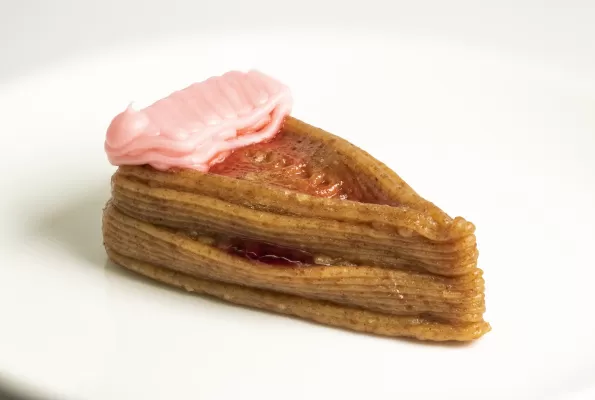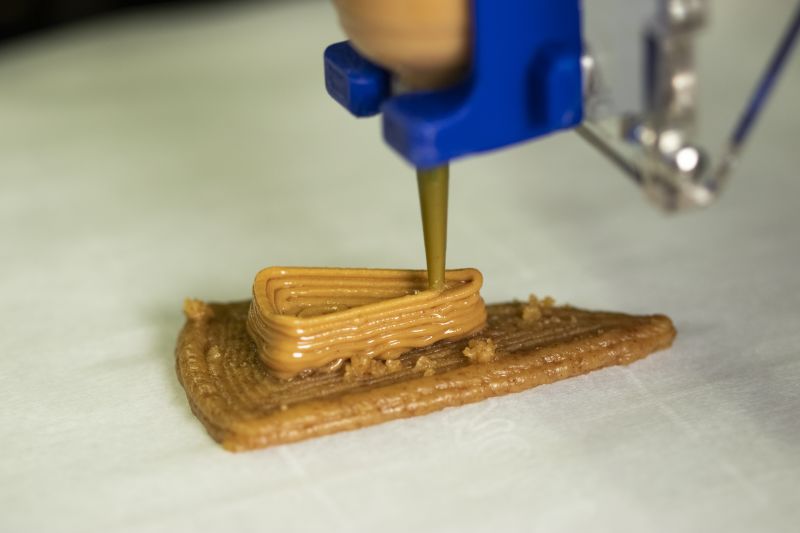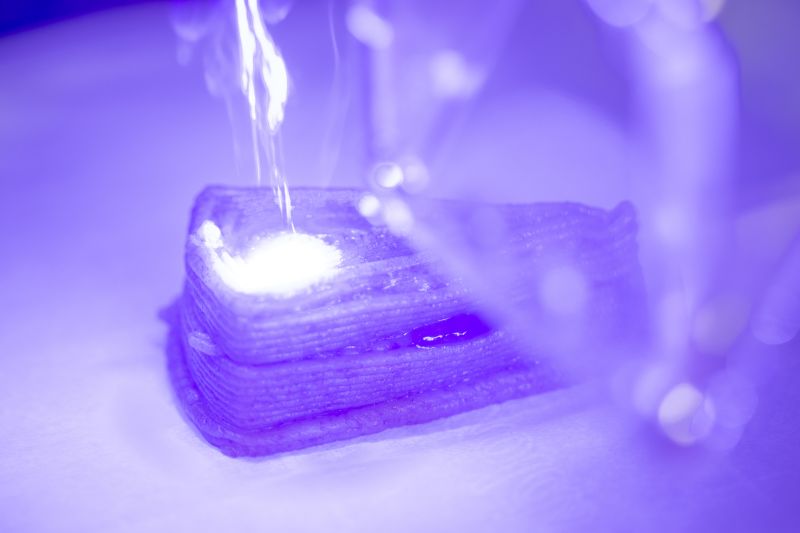
3D-food printing for healthy eating and delicious desserts
What says Thanksgiving more than finishing the meal with warm, homemade apple or pumpkin pie? As the harvest holiday approaches, food is on the mind of millions of Americans, making it the perfect time to dive into the fascinating, fun science behind 3D-printed food, which may be coming to your Thanksgiving table.
Advances in the science of 3D-food printing have enabled researchers to print novel foods. And by experimenting with texture and taste, this new frontier of customized food science taps into the national interest of healthy cooking and foodie culture.
Food printing technology has existed since 2005, introduced by mechanical engineers at Columbia University in professor Hod Lipson's Creative Machines Lab. But to date, food printing has been limited to a small number of uncooked ingredients, which in turn produce what many call "unappetizing" dishes.
A research team in Lipson's lab, supported in part by the U.S. National Science Foundation's AI Institute for Dynamical Systems, wanted to cook up something delicious. So, they experimented with 3D printing different types of vegan cheesecake. The team did not use cream cheese, instead testing various recipe designs using seven key ingredients: graham crackers, peanut butter, Nutella, banana puree, strawberry jam, cherry drizzle and frosting.
They found that the most successful recipe design used a graham cracker crust as the foundation for each layer of the cake. Peanut butter and Nutella proved to be best used as supporting layers that formed "pools" to hold the softer ingredients banana and jam. Multi-ingredient designs evolved into tiered structures that followed principles similar to those used in building construction; more structural elements were needed to support softer components for a successful multi-ingredient layered print.
The researchers can see a future where 3D-food printing takes its place alongside grills, cooktops, stoves and microwaves as a way to prepare food. "Because 3D-food printing is still an emerging technology, it needs an ecosystem of supporting industries such as food cartridge manufacturers, downloadable recipe design files and an environment in which to create and share these recipes," says Jonathan Blutinger, a postdoctoral fellow in the lab.
They also see a future beyond desserts, where 3D-printed food provides a healthy alternative to commercially available fast food and readily available high-calorie snacks, ideally with personal 3D-food printers being able to print nutrient dense, high-quality food at home.
3D-printing food may also allow for customization of lab-grown meats. Further developing the technology behind already existing 3D-printed burgers could allow for the removal of oils and other ingredients in prepared foods that can contribute to high cholesterol and obesity. Furthermore, for those with food consumption disorders like food sensitivity or swallowing disorders, 3D-food printing allows nutritious, customized alternatives to what is found on grocery store shelves.
"We have an enormous problem with the low-nutrient value of processed foods," says professor Christen Cooper of Pace University Nutrition and Dietetics. "3D-food printing will still turn out processed foods, but perhaps the silver lining will be, for some people, better control and tailoring of nutrition, personalized nutrition. It may also be useful in making food more appealing to those with swallowing disorders by mimicking the shapes of real foods with the pureed foods that these patients — millions in the U.S. alone — require."
So this Thanksgiving, let's add science revolutionizing the food industry to our list of things to be thankful for!





